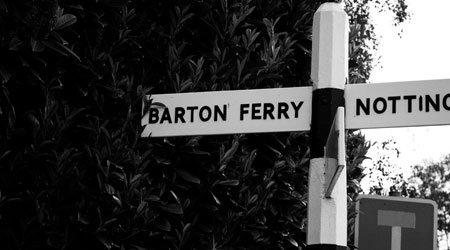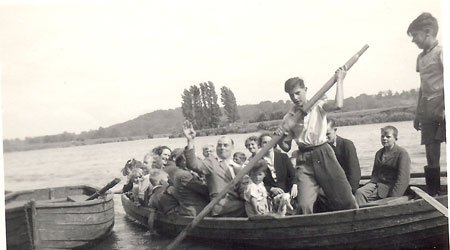About Barton-in-Fabis and its History
Barton in Fabis is a rural village, 6 miles from Nottingham and close to the summit of Mill Hill, which was once the site of an old windmill. There are some 20 ‘Bartons’ in England and in 1331 the village was called Barton on Trent, but this was changed to Barton in the Beans to avoid confusion with Burton on Trent and to acknowledge the local production of bean crops.
Between the 1860s to the 1960s shopping facilities were available in the village, and at differing times there was a Post Office, sweet shop, general store, butchers and bakers. Barton residents cannot within living memory remember a pub in the Village, but in 1676 it had two taverns serving only 86 inhabitants old enough to drink!
In Victorian times the village became known for its tea houses. During the summer many people visited Barton, this was no doubt due to the popularity of the Barton Ferry which went across the River to Attenborough and back, bringing people to the Village to sit on the river bank and enjoy a cup of tea. In later years the Ferry continued but the tea houses closed and eventually the Ferry finished its river crossings in the early 1960s.
Barton Village Hall used to be the Village School. The building originally formed part of the Colonel Clifton’s Estate. On 3rd August 1874 it was given to the Rector and church wardens of the parish of Barton in Fabis in trust for use as a school. In 1882 a house was built for the headmistress, Miss Mary Newman. By 1912 the school was classed as mixed Public Elementary, with 80 children on the roll and an average attendance of only 53! By 1945 the register had dropped to 26 children, Mrs Deakin was the Headmistress and Kath Robertson a teacher. Barton School closed its doors in 1962 and under the relevant schools legislation it was returned to the Clifton Estate.
After negotiations a Trust was created by a deed dated 22nd May 1967 made between Lieutenant Colonel Clifton and the first trustees of the Village Hall. The deed states that the building is to be used “to provide a village hall for the inhabitants of the parish of Barton-in-Fabis and the immediate vicinity without distinction of sex, or of political, religious or other opinion”.
To find out more about our local history it is recommended to visit the beautiful 14th century Church of St George to reflect on the charming surroundings and appreciate the history contained within its walls.
A further brilliant resource is located in the converted telephone box outside the Old Forge, which has numerous historical references and articles posted inside.






